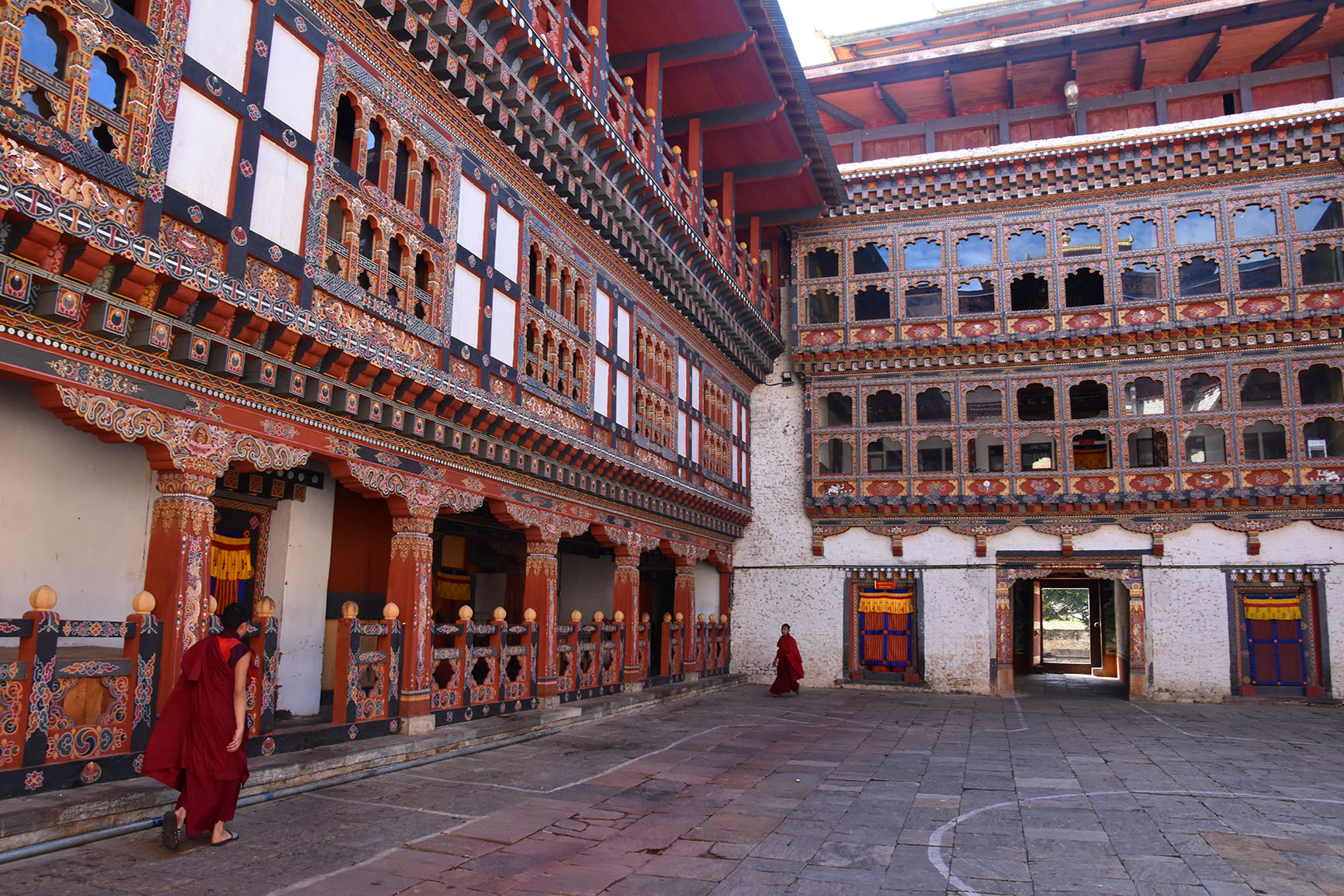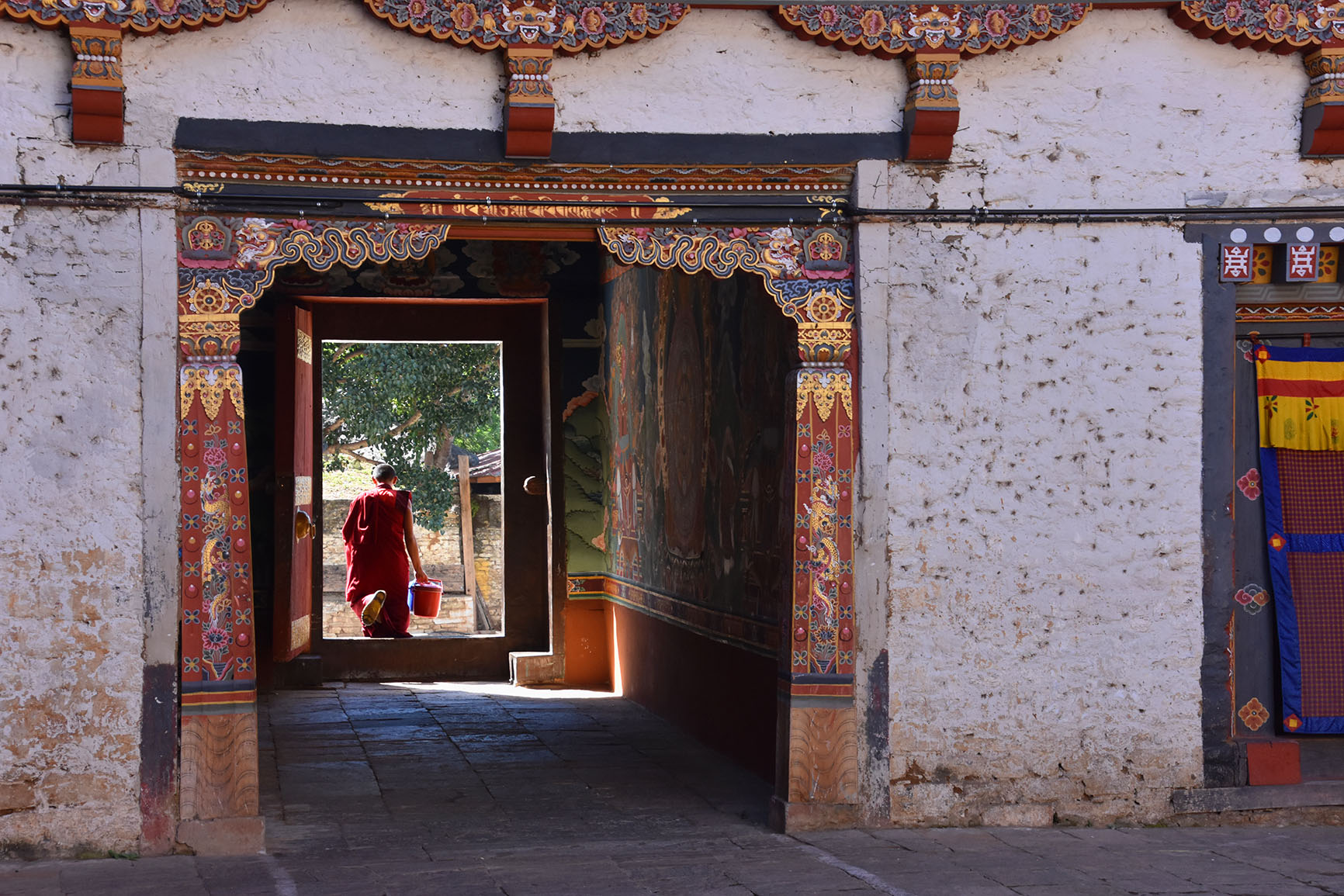Trashigang Dzong – Eastern Bhutan
Built in 1659 to hold off Tibetan invaders, Trashigang Dzong is one of Bhutan’s largest and most notable dzong fortresses.

Perched high above impenetrably steep cliffs, overlooking the Gamri Chhu and Drangme rivers, the home of this devout monastic community is also known as the ‘Fortress in the Sky’. It has recently been magnificently restored, following the earthquake in 2009, and now immaculately echoes its former history and grandeur, as initially designed by Trongsa Penlop Minjur Tenpa.

Colourful and imposing, yet welcoming, the dzong hosts the town’s annual tsechu (religious festival), when people travel from all over eastern Bhutan to enjoy the region’s traditional dances, mask performances and folk songs. The Merek and Sekteng nomadic communities, with their local dress costumes, offer particular charm.
Accessing the dzong from the western outer buildings and external courtyard, the fortress stands with white-washed stone walls and a brightly coloured, ornate Buddhist-red timber front door, surrounded by windows. The entrance hall is spectacularly painted with bright frescos of iconic images of Lord Buddha’s teachings and scriptures.

I was also immediately struck by how peaceful this monastery is. With the resident monk community gently gliding between doors, across the bright sun-lit courtyard, the sense of stepping into a holy place was present throughout the praying and meditation areas (where you are not allowed to take photos).
Trashigang Dzong is located so far east that international visitors to this region are few and far between. Indeed, visiting in the post-monsoon month of late October, my wife Nicki and I appeared to be the only visitors that day – aside from the local monks and two Trashigang ladies with their young girls.

It was a real treat and we felt honoured to be so lucky. Especially on a bright sunny day, which showed the fabulous colours of the renovation to such advantage at this most special of Bhutanese fortresses.
An absolute must if you can plan your trip around the remoter Eastern Bhutan regions.
































